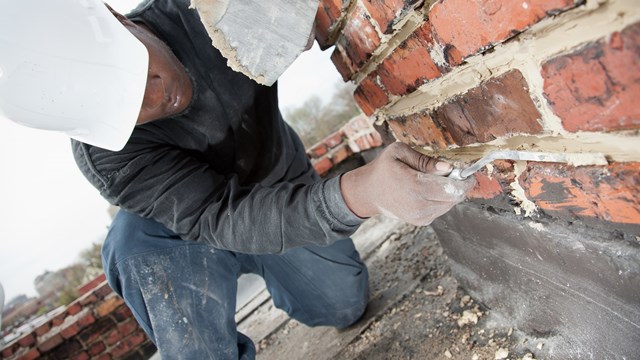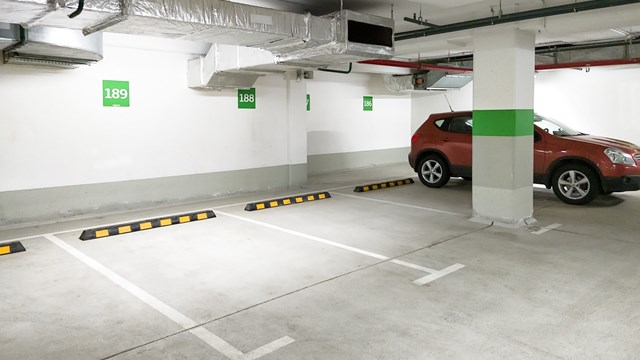City Corporation Counsel Michael Cardozo pleaded with members of the City Council last month to enact meaningful tort reform to help the city close what officials say will be a $6.4 billion budgetary gap by 2004.
Cardozo made a two-and-a-half hour presentation to the council's Transportation Committee in support of two bills intended to reduce the city's payout in legal costs related to slip-and-fall cases resulting from defective sidewalks. Intro 192 - commonly called the Big Apple bill - aims to provide the city with written notification of sidewalk defects, and Intro 193 - dubbed the Adjacent Landowner or Sidewalk Liability bill - seeks to make commercial and multifamily residential property and building owners liable if they fail to comply with existing law to repair and maintain sidewalks properly, as well as to remove snow and ice during winter months.
Cardozo stressed that the legislation was necessary because the city pays out more than $60 million annually in sidewalk case judgments and settlements, and shells out another $10 million in associated legal and back office costs as a result of the assorted claims, of which there are approximately 2,600 filed annually.
"At a time when everyone in the city is focused on how we close the city's budget gap without adversely affecting the quality of life, the council has before it Intro 193 that will save the city money and improve the quality of life," said Cardozo. The law today seems to encourage the wave of slip-and-fall cases that have been climbing since 1978, according to Cardozo.
"Today, if someone falls on a sidewalk as a result of a crack and the city has at least theoretical notice of that crack, the city is liable. You trip, you fall, you sue, you win. And that is true, even though the present administrative code provides that it is the obligation of the landlord to keep the sidewalk in good repair," Cardozo said.
"What we're suggesting in our bill, which is modeled after an approach adopted by the city of Long Beach and upheld by the highest court of the state, is that commercial property owners and multiple dwelling property owners - not the city - will be liable to citizens who are hurt because of cracks on the sidewalk. People who are hurt would still be able to sue, but they will sue the building owner, not the city," Cardozo said. The owners of one-, two- or three-family residential homes that are owner-occupied are exempt.
The $60 million that the city pays on sidewalk judgments and settlements annually is a cost that has been skyrocketing over the past 30 years, Cardozo claimed. And 26 percent of the pending 47,000 cases being reviewed by the legal department are sidewalk cases, he said. "Tort judgments on sidewalk cases have gone through the roof. They've increased over 1000 percent in about 25 years. That compares to the cost of living increase in New York City of about 181 percent."
The answer, some say, is to just fix the sidewalks - but that is a near impossibility, claimed Cardozo. "There are 673 million square feet [of sidewalk in New York City], and I think I would win a trivia contest if I told the committee that that totals half the circumference of the world. If you took all of the sidewalks in New York City and you laid them end to end they would total 12,750 miles, which is halfway around the globe."
The city spends about $12.5 million per year to fix its sidewalks, he said, but that only represents fixing less than one percent of the sidewalks that need repair. And at that rate, it would take the city about 224 years to fix half the sidewalks that need repair. The total cost of fixing all the sidewalks would be almost $3 billion dollars, which is not practical, Cardozo said.
Of the roughly 1 million properties in New York City, Intro 193 would affect about 300,000 commercial and multifamily dwelling properties, for which the building or property owners are already insured, he said. Even if the full liability is shifted to these property owners, it would represent a minimal cost, and secondarily, provide an incentive for the landlords and building owners to fix the sidewalks in the first place, said Cardozo.
For each of the 2,600 claims that are filed, the average payout is about $20,000, according to Cardozo. He highlighted the case of a 76-year-old Bronx woman, who won a $500,000 award after she fell on a small crack in a sidewalk and fractured her left hip. In the past three years, the city has paid out $189 million in judgments resulting from slip-and-fall cases related to either defective sidewalks or snow and ice.
Part of the difficulty in fixing the sidewalks is that the city doesn't have proper notice, which Intro 192 attempts to correct, he said. In 1979, the City Council passed a bill requiring that the city have written notice of sidewalk defects and 15 days to institute repairs. Subsequently, the New York State Trial Lawyers' Association (NYSTLA) formed the Big Apple Pothole and Sidewalk Protection Corporation to provide the city with such notification. The company contracted with Sanborn, a map company, to produce "squiggles" on maps to indicate defects. While this satisfies provision of legal notice, these thousands of squiggles "tell the city absolutely nothing about the exact location, height, depth, or degree of severity of the defects," according to Cardozo, who presented the council with some of the 14 boxes of maps the city receives each year.
"Intro 193 would save the city on a continuing basis some $40 million dollars a year. Intro 192 would give the city real notice, not the inadequate, meaningless notice contained in 5,000 maps in those boxes."
Several other bills also under the council's consideration - strongly opposed by the mayor's office - place the liability for sidewalk and tree damage squarely on the city's bailiwick. Intros 39, 41, 141, 242 and 295 exempt property owners from bearing responsibility for any damages caused by trees, fire hydrants, parking meters or any other city-owned installation on city sidewalks and any damages caused by the city during a capital improvement or reconstruction project.
"Intros number 39, 41, 141 and 242 all have the same goal at their cores," said Councilman John Liu of Queens, Transportation Committee chairman. "They seek to shift the legal responsibility for effecting repairs in certain specialized circumstances to the appropriate party, that being the city of New York. There's no reason why such property owners should remain legally responsible for making repairs to sidewalks that front their property along their curbs when the damage was caused by some action or inaction of the city. The city and not the property owner or homeowner should bear the physical and financial burden of repairing such sidewalks."
Liu believes the city should ultimately bear responsibility for the sidewalks that it maintains by law. "The final three bills on our agenda, Intros 192, 193 and 295 are also joined by a common theme, which is a liability for damage and injuries proximately caused by unsafe sidewalk conditions," said Liu. "These bills attempt to address and correct the phenomenon of the city paying out millions of dollars per year for sidewalk claims while the property owner doesn't pay any money at all."
During questioning, Cardozo faced intense grilling by council members, who claimed the mayor's intent was simply to limit the city's liability, especially if someone is seriously injured on city property.
Councilman Oliver Koppell of The Bronx introduced legislation that would make the city secondarily liable for any damages caused from a defective sidewalk because the city owns the sidewalk. He said the city should be responsible for maintaining the sidewalks under its control.
"The one thing we don't need in this city is still more litigation," Cardozo cautioned Koppell. "And, under your bill, with all due respect, you're going to have cross claims, you're going to have indemnity claims, you're going to have still more litigation, and I don't think that's a very practical way."
Koppell asked what would happen to the injured party when they sue the property owner rather than the city. "An ordinary person is walking down the sidewalk and there is a serious defect, and that person trips, and that person is very seriously injured. And the adjacent property owner happens to be bankrupt, and the city owns the sidewalk. How do we justify saying to that person, "˜you can't recover?'"
There might be cases where a property is uninsured or inadequately insured, admitted Cardozo. But property owners do benefit from public services and that includes the city's sidewalks, Cardozo said.
Councilman Lewis Fidler of Brooklyn said a person could become injured even if only a small defect exists. "A serious defect can be a quarter-inch or a foot, but if they trip in it, it's a serious defect."
"Even a small defect can cause a big injury," agreed Cardozo, "and that's why we want to say someone else should do the fixing." He added that two-thirds of the accidents occur in the more heavily-traveled areas, which are in front of commercial and multi-family properties, not near one- or two-family homes.
The predicate of the city's argument, said Fidler, is that property owners are insured. "When you're talking to someone that is more seriously injured and the city is not going to be at all responsible, even in the case of a commercial property owner. Someone trips in front of a commercial property, insurance maxed out, their injury truly does justify a burden in excess of the insurance, what are you saying to that injured person?"
"What I'm saying," responded Cardozo, is we got to find a way to fix New York City sidewalks."
"You know what you're saying is "˜tough luck,' " replied Fidler.
"No, I'm not saying tough luck. The administrative code says it's the obligation of the landlord to fix the sidewalk. It's been in effect for years. The only thing we're trying to do is put teeth into a law that you enacted."
The city should be liable for what happens on its own property, Fidler continued. "But you're asking this council to exempt the city from liability for defects in their sidewalk caused by their tree, which may or may not have been planted in front of my home with my consent by your city, our city. Now I love the trees. But there's a certain logical injustice when it's your sidewalk, your tree, your wrongdoing and therefore, the proximate cause of someone else's injury, and you're asking us for a pass.
"A plaintiff ought to be able to sue the responsible party. I recognize the incredibly bad economic situation the city is in. But there is an inequity and an injustice that is being done. If you do something you ought to be responsible for it."
Cardozo said the responsible party is designated by law. "Let's make the owner liable and the consequence of that will be to put an incentive to the owner to fix the sidewalk. Let's put the consequence and make the owner pay for the civil liability. I'm not suggesting that I'm at all callous to the plaintiffs. Now we'd all like to make the sidewalks safer."
Councilman Michael McMahon of Staten Island agreed with his colleagues. "My concern is that the boxes and the posters and all the fine witnesses and the laudable goals I've talked about are really just a smoke screen because another goal the mayor is pursuing is limiting access to justice on behalf of injured parties. So it's really not about going out and fixing the sidewalk. It's really about limiting the access to the court by the claimants."
Cardozo disagreed and noted that if the city inherently caused the problem, a property owner has every right to file a legal claim against the city to recover damages. He said he is not suggesting that the city be absolved completely of all responsibility. The city Parks Department is also available to fix any tree root problems on city property that is brought to their attention by homeowners, he added.
Councilman James Oddo of Staten Island said it's too simplistic to believe that his constituents would patiently wait for the Parks Department or the Department of Transportation (DOT) to come fix a sidewalk that was buckled by a tree root or other problem.







Leave a Comment